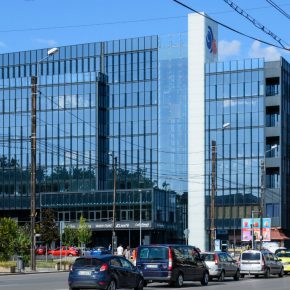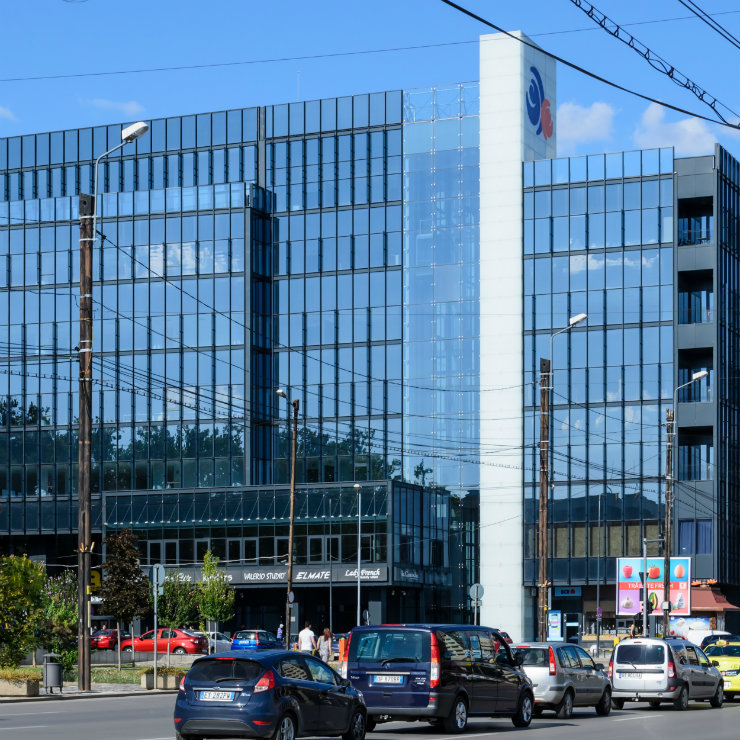Tydzień w gospodarce
Category: Raporty

Iasi, Romania (Costel Slincu, CC BY-NC-SA)
Cushman & Wakefield Echinox compared Romania with Poland, a relatively similar market, and noted a gap in the development of Polish regional cities compared with Warsaw. While the modern office stock exceeded 5 million square meters (sqm) in Warsaw, the four major cities of the country, Kraków, Wrocław, Łódź and Katowice, have a cumulated stock of 2.7 million sqm of office space.
Things are also different in Poland when it comes to attracting potential employees with high education. For example, in Warsaw there are 249,000 students while their number is almost double in the four Polish regional cities mentioned above. By contrast, according to National Institute of Statistics (INS), Cluj-Napoca, Timisoara, Iasi and Brasov have a cumulated number of students of 181,734, or 5.6% more than Bucharest.
As for the density of office space related to the number of students, the Cushman & Wakefield Echinox data show that it is 21 sqm/student in Warsaw while in Bucharest the indicator is 15.
“It is perfectly normal for the development of office market to start in the capitals where the largest companies and public institutions have their headquarters. But as the competition on the workforce becomes fiercer, companies look to extend their activity in other important university centres where they find well trained workforce and a bit lower level of salaries,” says Madalina Cojocaru, partner, office agency at Cushman & Wakefield Echinox.
“We see a significant potential for growth of the market office outside Bucharest. A proof in this regard is that the office stock in Cluj, Timisoara, Iasi and Brasov will increase by 35-40 per cent and will reach the level of 1 million sqm by end of this year,” adds Cojocaru.
According to Cushman & Wakefield Echinox data, Timisoara and Cluj-Napoca will post the most significant development in the next period, with a total of about 180,000 sqm following to be inaugurated in the two cities in the next period.
Mulberry Development has started construction of ISHO Offices, a new generation of office building, in Timisoara. “The construction develops in parallel with the residential component and it is split in three stages. The first stage of the office project will have 18,000 sqm and will be delivered next spring,” says Ovidiu Sandor, CEO at Mulberry Development.
He adds that the demand for office buildings in Timisoara is very high and comes from both companies, that have a presence in the city and intend to consolidate it on the local market, and new players that want to make their entrance there. IT, BPO, financing and engineering are among the main sectors. “This fall we will announce new contracts and we estimate that almost all of our available space will be leased by the time we will deliver the first stage of the project,” adds Sandor.
Survey Sampling International, one of the global leaders in providing data solutions and technology for different sectors announced that it will lease office spaces for 200 employees at ISHO.
Going further, this year Iulius Management Center inaugurated its first A class office building out of seven office buildings that Openville Timisoara, a mixed use urban regeneration project. The project is designed as an urban sustainable center that will bring together office, retail, park and entertainment functions, spanning on a total built area of 594,000 sqm. “The most part of the project is represented by the office component developed under the United Business Center (UBC) brand and that will have about 130,000 sqm, split in seven office buildings,” says Laurentiu Manea, manager office buildings at Openville.
At present, the demand for office space outside Bucharest is on an ascending trend mainly because of the expansion of international companies towards regional cities. “A total of over 80,000 sqm have been leased in the first five largest cities in Romania last year. Timisoara has the largest proportion from the total leased area (48 per cent) being followed by Iasi (28 per cent) and Cluj-Napoca (14 per cent),” says Mihai Paduroiu, Head of Advisory & Transaction Services, investor leasing in the office department of CBRE Romania. The vacancy rate in regional cities, he says, remains low due to the fact that when a new real estate project is completed, up to 80-90 per cent of it is already leased.
“The average vacancy rate in the largest regional cities in Romania is about 7 per cent and we don’t see a significant variation despite the fact that many projects have been announced for the next two years. The pace of development is a sustainable one given the fact that the offer will be covered by the demand,” says Andrei Drosu, consultant within the research department at Jones Lang LaSalle (JLL).
According to Drosu of JLL, in H1’17 Timisoara posted the highest demand for office spaces, 13,200 sqm, followed by Cluj-Napoca (8,700 sqm) and Iasi (6,000 sqm). But despite some transactions have been completed in smaller cities, like Targu Mures, Craiova or Pitesti, the offer for modern office spaces here is still very low.
“Except the large cities like Timisoara, Cluj-Napoca and Iasi, in Targu Mures, Pitesti and Craiova both the activity and interest for new office spaces increased significantly. But these cities had a weight of 10 per cent of the total leased area,” says Paduroiu. According to him, in general, technology, IT and professional services remain the most active industries that lease office spaces. “This trend is similar for regional cities too, where IT companies have leased over 21,000 sqm and professional services ones over 4,500 sqm in the first half of 2017,” he adds.
Drosu of JLL shares the same opinion saying that at present the market is dominated by IT&C companies which leased about 70 per cent of the total transactions registered in the first half of 2017, followed by outsourcing companies with 20 per cent.
“Companies that make their entrance in Romania by opening offices outside Bucharest (like Alcatel, Nokia, Continental, Atos) and those that extend their operations from Bucharest to regional cities (like IBM, Accenture or Vodafone) slice the outside Bucharest office market now,” he says.
Vasile of Cushman & Wakefield Echinox says that the office market from regional cities is quite dynamic and it is on an ascending trend at least from two perspectives: that of the evolution of the completing of new office buildings and of the number of companies that open new centers or extend their activity. “A competitive cost with workforce combined with high education and more and more flying connections are the main reasons for investors to consider regional cities as an alternative for their operations,” adds Vasile. In her opinion, Iasi, Timisoara, Cluj-Napoca and Brasov will continue to have the highest potential in the future, despite the fact that in the past two years cities like Sibiu, Craiova and Galati managed to attract companies that are ready to open their offices there.
The office market in Bucharest has already reached its maturity due to the presence of real estate investors and to the concentration of investments in the capital. Thus, Romanian regional cities become a target for many developers that intend to diversify their portfolios. “Such cities are changing now, and investors are more and more focused in this direction. The entire impetus in this sector is based on an increasing demand coming as a result of an increasing number of companies that are attracted to invest in Romania,” adds Paduroiu.


